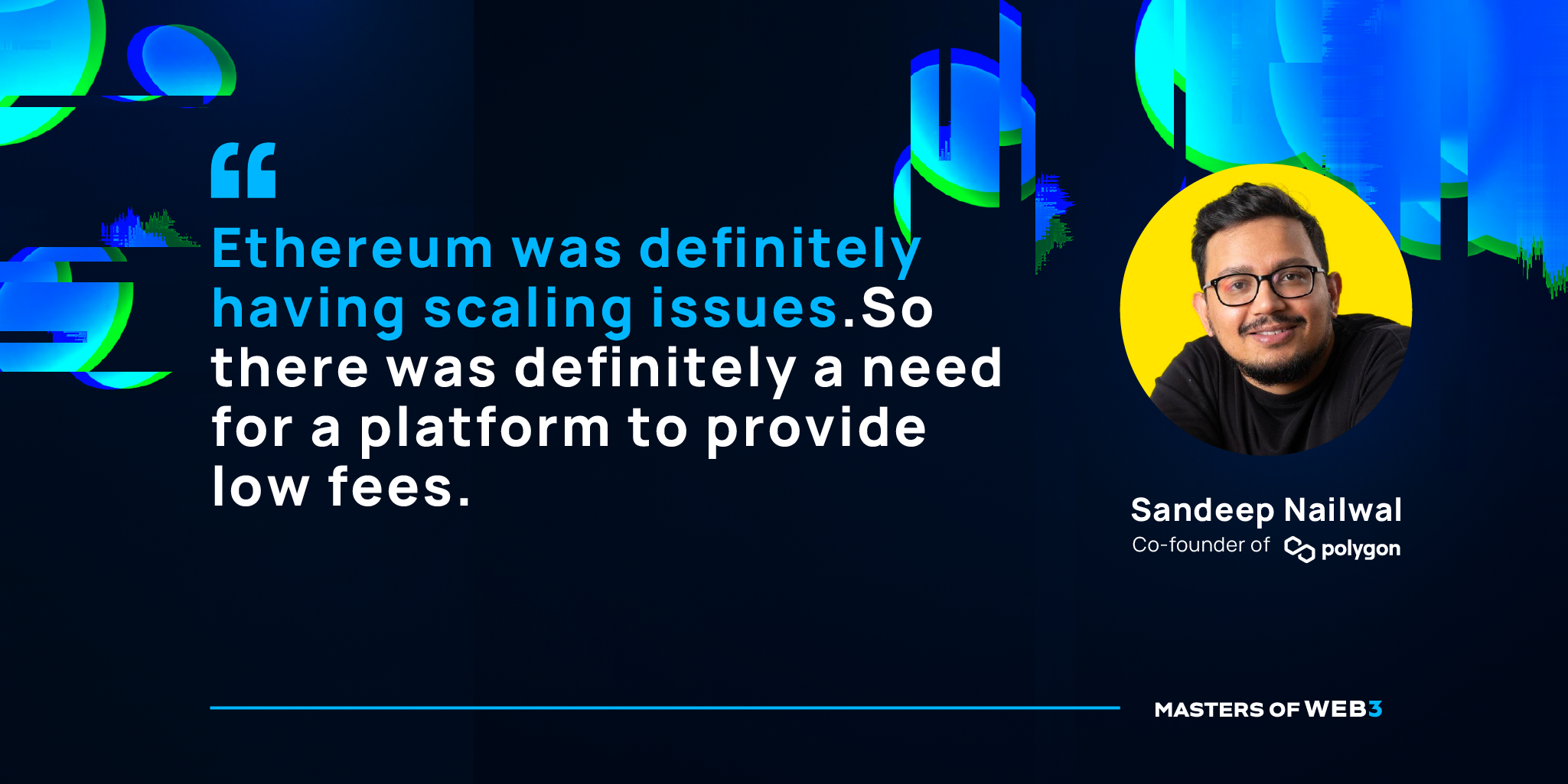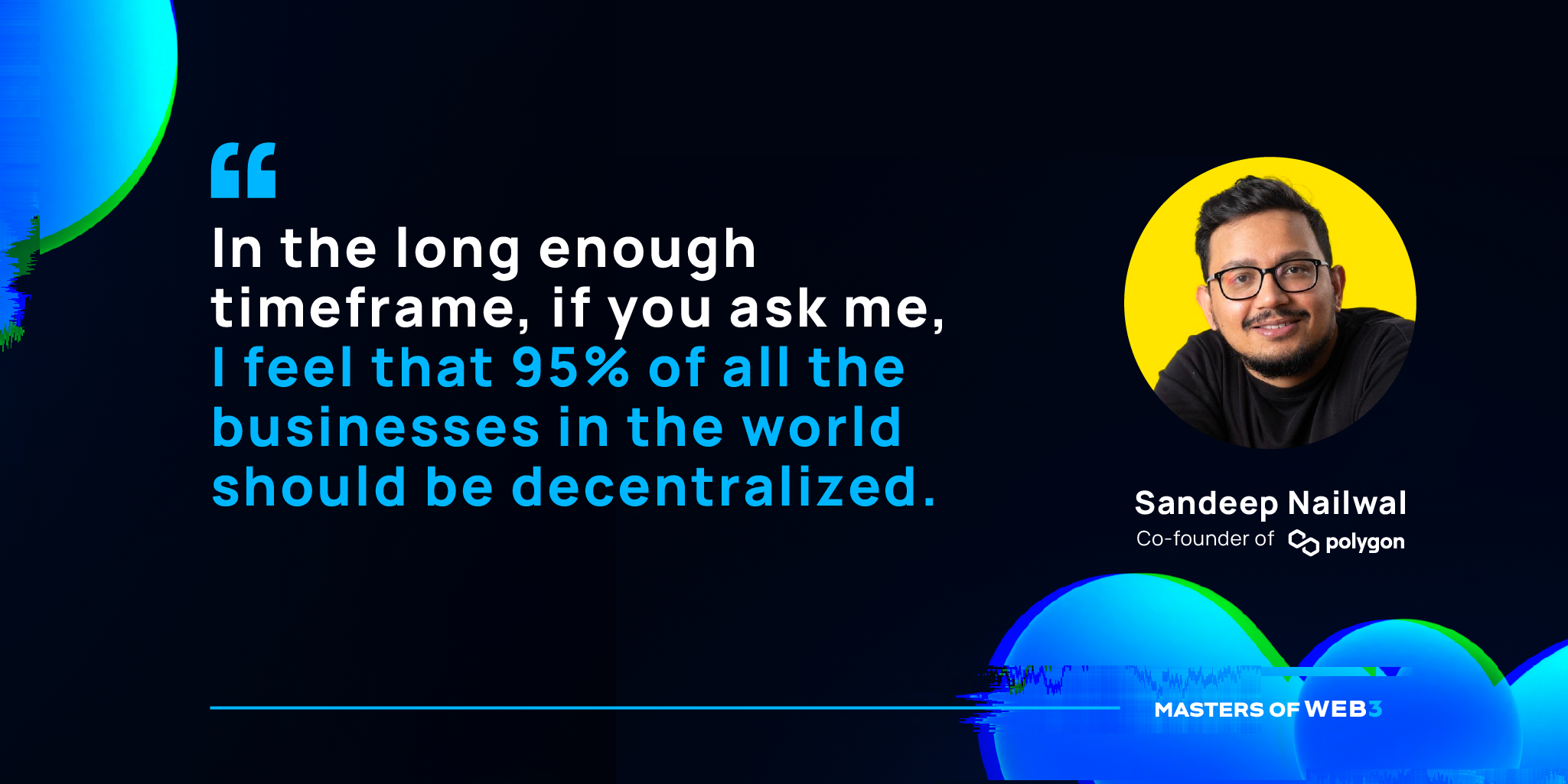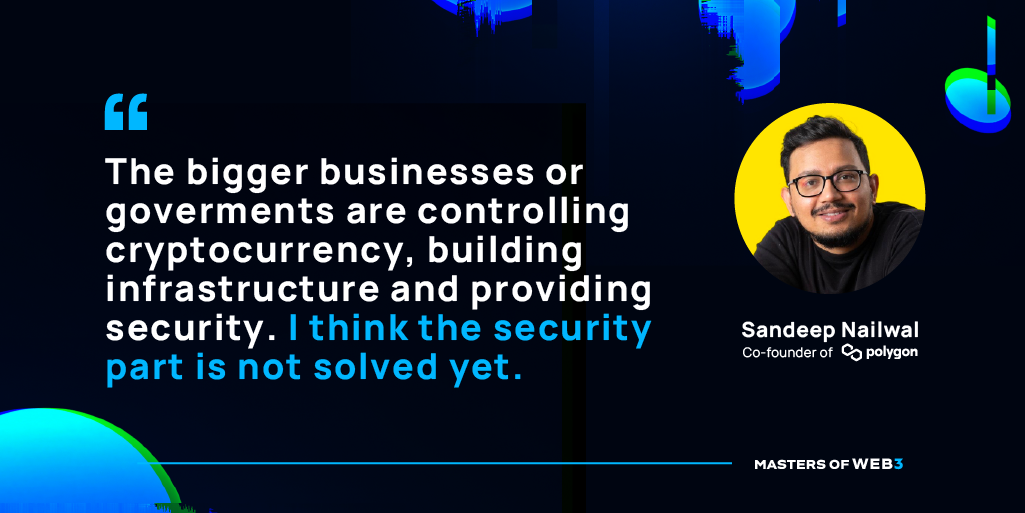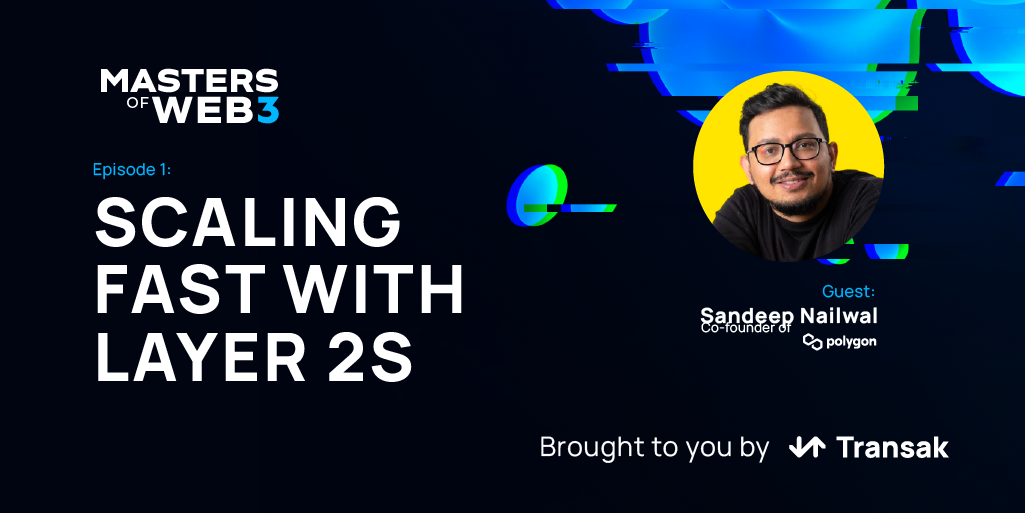Decentralization has incentivized millions worldwide to join the ranks of the bankless. It’s a turn the founders of Polygon Technology predicted back in 2016.
Originally known as Matic Network, Polygon has become the most widely adopted Layer 2 scaling solution for the Ethereum blockchain. It’s all part of Polygon’s mission to provide a scalability platform with very low transaction fees.
In our conversation with Sandeep Nailwal, Co-Founder of Polygon Technology, Sandeep explained:
- How Polygon came into existence
- How Polygon built a crypto community
- The challenges to mainstream adoption of crypto in India
Listening on a desktop & can’t see the links? Click below to listen on your favorite podcast player:
The advent of Polygon
When it comes to Layer 2 solutions, founders will often share a similar origin story: Layer 2 scaling wasn’t their original destination, but a necessity for getting there.
Many of the sharpest entrepreneurial minds in the tech space are drawn to the massive potential that the decentralization offered by blockchain technology promises the world. So they set out to build upon the technology with their Web3 solution, but then they hit a snag.
Due to Ethereum’s massive popularity, network congestion renders the foundation they are building upon shaky when it comes to scaling.

So, what to do?
Rather than letting this shaky foundation be their crypto-nite, founders like Sandeep realize that, in order to unlock the full potential of blockchain technology, they first need to tackle the obstacles to scaling.
And that’s how companies like Polygon are born — and ultimately their affordable Layer 2 scaling doesn’t just solve their problem; it helps a whole host of others overcome the scalability hurdle through its ability to relieve network congestion by communicating with multiple different blockchains.
Reducing congestion speeds up transactions, which is critical for those looking to cut out the middleman and opt for a decentralized way to lend, borrow or trade, where poorly timed transactions can lead to costly losses.
Cultivating a crypto community
So, how did Polygon go from working on such a tough problem in the Ethereum space to being the most widely adopted Layer 2 scalability platform in such a short space of time?
If you ask Sandeep, the answer is simple — though one that may defy conventional wisdom.
Many in the tech space take an “if you build it [perfectly] they will come” approach to their product.
For Sandeep, that’s backwards.
His approach at Polygon was to focus on adoption while still working out the kinks in the solution. He’s seen plenty of others fail by powering down their sales engines while tweaking their product to be “just right…” only to be beaten to the market segment during the downtime.
At Polygon, focusing on adoption first allowed them to more rapidly scale their scalability solution. From there, everything else fell into place.

And with that foundation, they doubled down on enabling their customers — no matter how large or small — with all the help they could provide to make them successful in their usage of the platform.
By bringing in customers early and giving all of them a white-glove experience at every step, they went beyond just building a customer base to building a thriving Web3 community with Polygon at its center.
Eventually, the culture created leads to an exponential flywheel effect, where every new community member begets more and more additions to the growing base of engaged users.
Crypto hurdles in India and elsewhere
Ultimately for Sandeep, the original promise of crypto that led to Polygon’s founding still motivates him and keeps him optimistic about the future.
It’s the promise to free the world from some of the stagnant institutions that are no longer the most effective ways of tackling some of the critical challenges society faces today.
But, perhaps unsurprisingly, shaking up such institutions comes with a fair share of backlash.
Sandeep, who is originally from India, has watched his country move beyond its long history of an off-the-books, cash-centric economy and transition to more modern financial institutions and instruments. But that hard-won progress also means that disruptors to these institutions are often seen as a threat — especially by the government.

It’s a challenge faced the world over. But for Sandeep, it’s not insurmountable.
Ultimately, he envisions a future where blockchain replaces two of the three biggest purposes governments serve — providing infrastructure and overseeing the economy.
As for the third — providing security and law and order — well, blockchain may not quite be there yet, but Sandeep has some potentially viable ideas on how it may become a reality.
That future, however, is only possible when the architects of Web3 are able to scale their solutions effectively.
And companies like Polygon are the ones making it possible.
Tagline with Apple Podcasts, Spotify, and website. Other tagline examples are located in the Show’s Writing Style Guide.
Listening on a desktop & can’t see the links? Click below to listen on your favorite podcast player:
Building on Polygon and looking to accept payments? Integrate Transak Today



